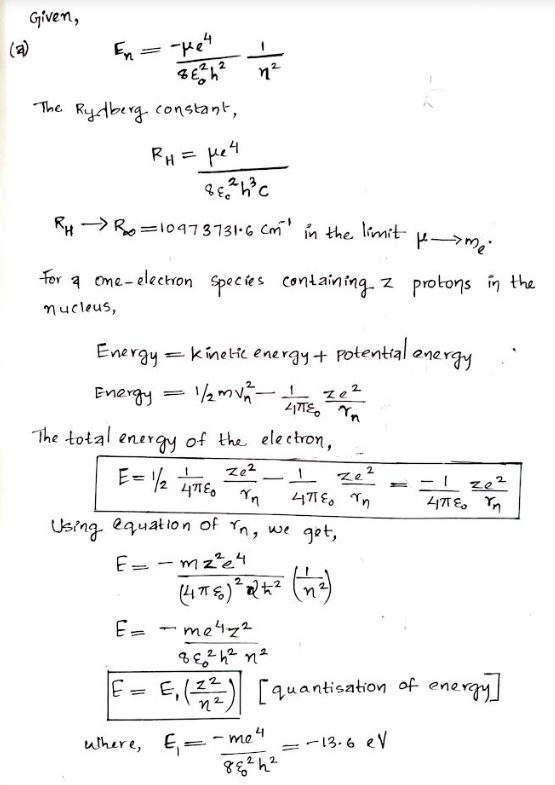Using the formula for the hydrogen atom energy levels, En constant can be written in terms of fundamental quantities, RH = Me 4 860²h³c = He4 1 860²h² n²¹ the Rydberg and its value approaches, RH → R∞= 10,973,731.6 m¯¹ in the limit μ→ me. (a) How would this constant be defined for a one-electron species containing Z protons in its nucleus? Consider how this changes the form of the Hamiltonian and the energy levels for that Hamiltonian. (b) The hydrogen atom emission lines in the Balmer series (n₂ = 2) lie in the visible portion of the electromagnetic spectrum. Would this also be true if Z> 1? Find the wavelength (in
Using the formula for the hydrogen atom energy levels, En constant can be written in terms of fundamental quantities, RH = Me 4 860²h³c = He4 1 860²h² n²¹ the Rydberg and its value approaches, RH → R∞= 10,973,731.6 m¯¹ in the limit μ→ me. (a) How would this constant be defined for a one-electron species containing Z protons in its nucleus? Consider how this changes the form of the Hamiltonian and the energy levels for that Hamiltonian. (b) The hydrogen atom emission lines in the Balmer series (n₂ = 2) lie in the visible portion of the electromagnetic spectrum. Would this also be true if Z> 1? Find the wavelength (in
Related questions
Question

Transcribed Image Text:=
Using the formula for the hydrogen atom energy levels, En
constant can be written in terms of fundamental quantities,
RH
=
Me 4
8€ ²h³c
Me4
1
860²h² n²¹
the Rydberg
and its value approaches, RH → R = 10,973,731.6 m¹ in the limit μ→ me.
(a) How would this constant be defined for a one-electron species containing Z protons in
its nucleus? Consider how this changes the form of the Hamiltonian and the energy
levels for that Hamiltonian.
(b) The hydrogen atom emission lines in the Balmer series (n₂ = 2) lie in the visible portion of
the electromagnetic spectrum. Would this also be true if Z> 1? Find the wavelength (in
nm) of the n = 32 emission in hydrogen and that for a one-electron species with Z = 2.
(You will be asked to report a quantity on the quiz that depends on these two values.)
Expert Solution
Step 1

Trending now
This is a popular solution!
Step by step
Solved in 3 steps with 3 images
